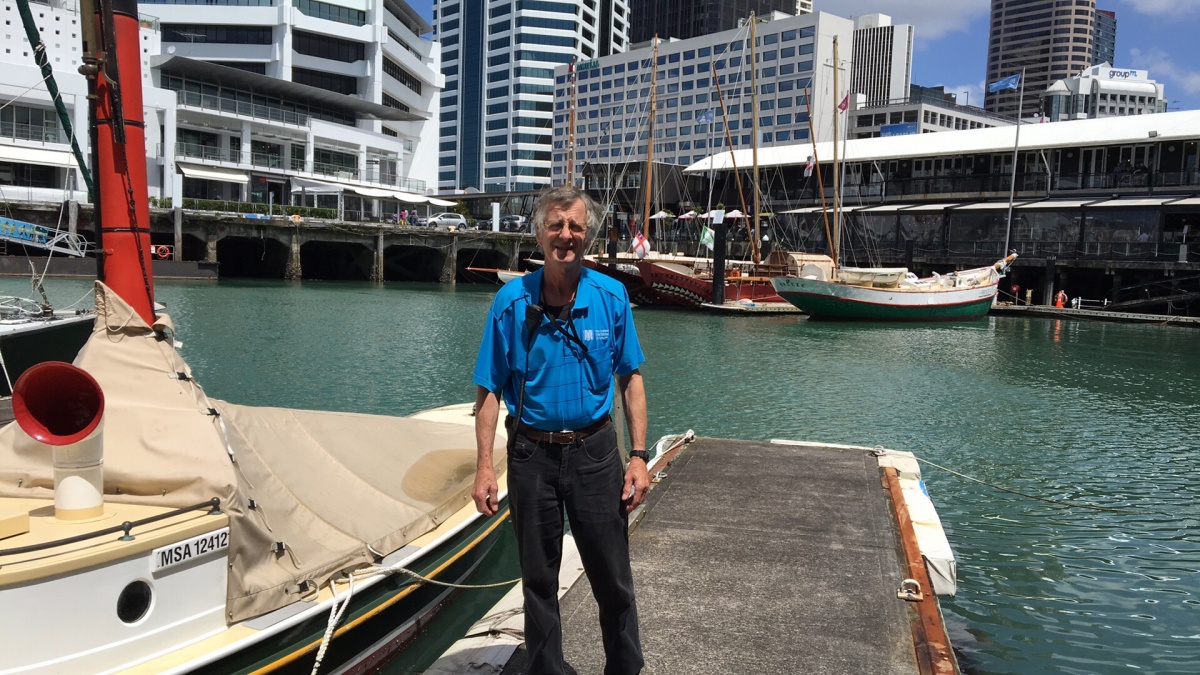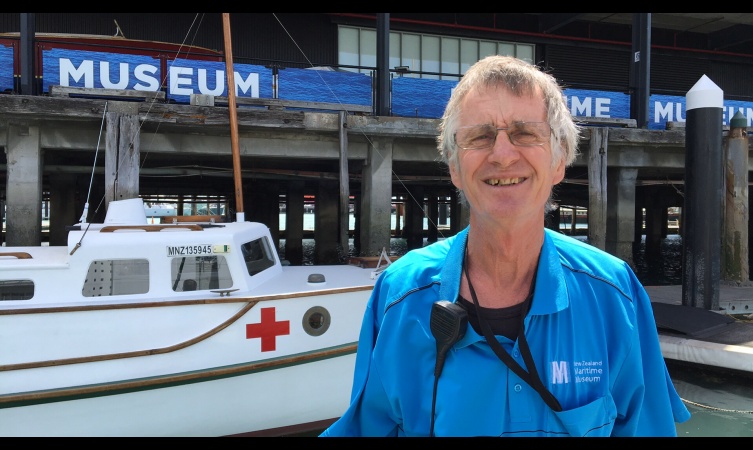Kevin Smith, Fleet Manager from New Zealand Maritime Museum is finishing up with the Museum on 19 December, after 15 years of service. In this interview we get to know some of the ins and outs of fleet management, and a little bit more about our Kevin.

1. What does your job involve?
I managed the fleet of the floating boats which involved organising, project management, and general maintenance of the fleet. There were three boats plus Rapaki (the steam crane) when I first started- Breeze, Ted Ashby, and Puke. And then we got Nautilus, which is a little launch. I project managed getting her into the water, heading the contractor and volunteers to help with that. And then my team members Rangi and Kieran came on board. Kieran worked full-time on Nautilus, and we got her in the water, so I had five boats to look after.
In the early days I was doing it on my own, which was a job and half, along with the office and admin part of the job. I had a good squad of volunteers, in fact we've still got them. I've christened them the W.O.B's- the Wednesday Old Boys, who come in every Wednesday, obviously! Some have drifted on, or passed away, but I've kept it to around about eight people. They did a lot. I had one part time guy, but apart from that, it was just us.
2. How long have you been at the Maritime Museum?
14-15 years. I've enjoyed it. It's been good. It's been a fantastic job, it really, really has. I wouldn't have changed it for anything. But there comes a time when you've got to move on.
I'm a boat builder by trade. In those days, there wasn't the safety gear that you've now, we didn't have the gloves, we didn't have the eye protection, and you end up lifting the wrong way, because you're in the boats. In those days you never complained about a sore back- it would be “man-up" and that sort of thing, but it's real pain.
3. What's your background - where were you before joining the Museum?
I did a boat-building apprenticeship when I was about 18-19 as an apprentice to Tess Bailey. I served about a five year apprenticeship there, worked around the other places and then I was asked to do a bit of work here at the Maritime Museum under contract. I was at Ted's Masts, and a mate of mine got the contract and asked me if I'd come and give him a hand, so one thing led to another. I would run in between here and Sandfords in Hamer St, towing my little trolley back and forth. I'd spend a couple of days here and a couple there. Then they had more and more work so I was asked if I want to come and work full-time. I thought about it for about two seconds flat and said yes! It was one of the best moves I ever made.
I've served under about four or five directors in my time. The Museum is going in a different direction, which you've got to expect to a certain extent. The whole education side of the Museum has changed- not so much protecting “things". To get kids interested in stuffy old boats, you have to hold their interest, which means interactives. So things have changed a little bit.

4. What have been some of the highlights in your time that really stand out for you?
It was always pretty interesting, it wasn't a same-old boring, job like you used to get. Something different would happen every day. You'd start a job, and then a boat would break down so you'd have to go over there and you didn't know where you were half the time.
The job had its worry and stress. Money was tight in those days too, and we relied a lot on our volunteers, who weren't always capable of doing the job, even though it was good of them to give their time.
The W.O.Bs are still going in the workshop. They come from all walks of life and weren't always tradesmen. We've got one here today who's a retired plastic surgeon, and he's very good with his hands and you don't' have to worry about him. His workmanship is fantastic, I suppose it had to be! We've had people from all sorts of industries.
We've had some interesting visitors in the harbour over the year, fur-seal pups, stingrays, and even orca.
5. What's something unexpected or unusual people might not know about your role, or working at the museum?
People don't realise what goes into keeping a boat on the water. It's not just a matter of putting a boat into water and putting people on it. You've got to go through a lot of surveys and inspections, there's always safety inspections. You can't just put a boat in the water and go. A lot people think they'll buy a boat and go out and have fishing parties and the like- well good luck!
6. Tell us some things we might not know about you outside of work?
I grew up on Waiheke Island where we always had boats. My older brother is a boat builder and as kids we spent most of our days around boats, in the water, or around the water. We'd go away for Christmas holidays in boats, and spend 2-3 weeks on the boat which was probably pretty hard on Mum! We lived right by the water on Waiheke- and I am still there.
7. What's next for you after leaving the Museum?
I have a lot of projects at home to do. I've got a place on Waiheke and my own boat that I want to get back in the water. I'll help out friends and neighbours when they need it. As I'm now only working one day a week, I do miss the Museum a bit, although I don't miss getting up at 4.30am every morning to get to work!
From everyone here at the Maritime Museum, thank you for everything Kevin. It's been an absolute pleasure having you on board and we hope you sail our way sometime soon. Tēnā rawa atu koe.